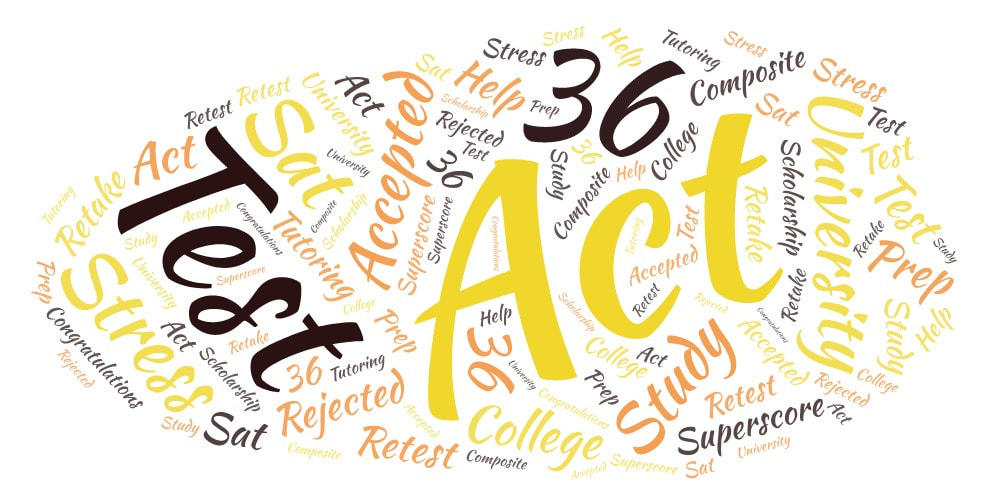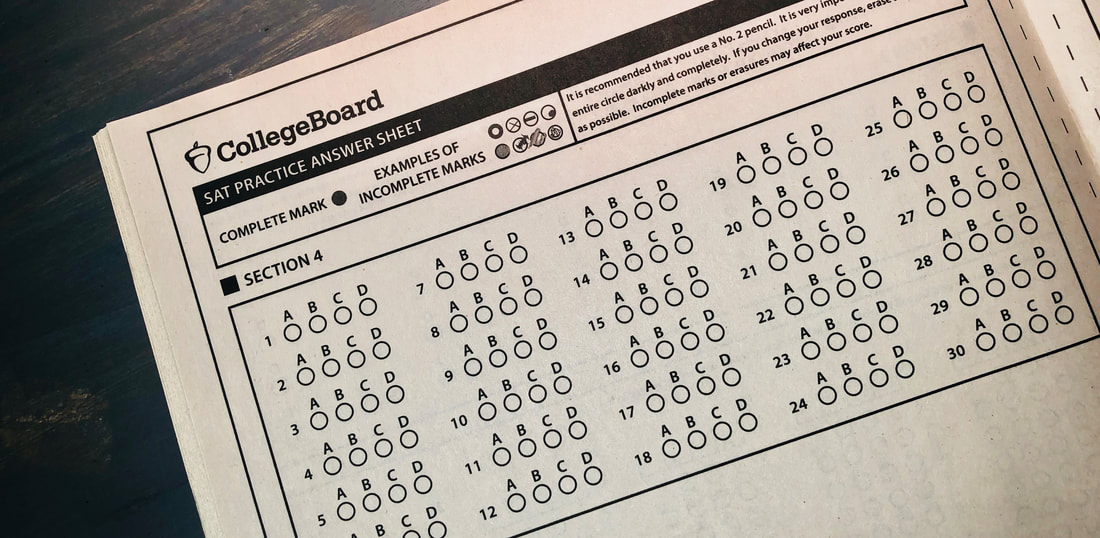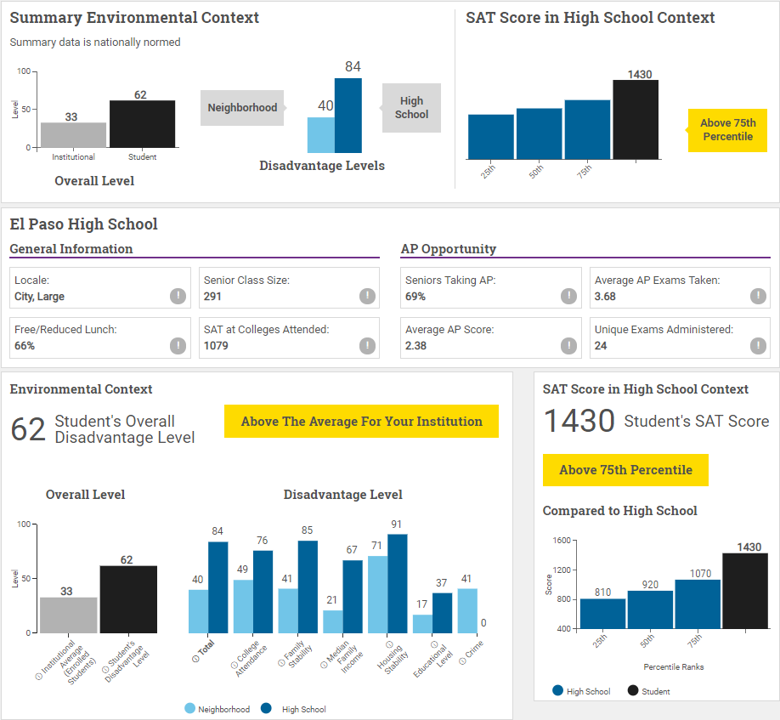|
The weather is cooler. The football games play in the background, and senior year homecoming is now a memory. Most seniors are soaking up their last months with their friends and enjoying the security of the world they've known for most of their lives. But, it's all about to change. Some kids are eager about their next chapter of life, but I find that most of the kids are insecure, hesitant, and even fearful about starting college next year. Parents may notice more arguing and defiance. Kids may begin to pull away. Don't let these last few months be a time of turmoil. Understand that when your kid shows the most resistance towards you, he's feeling the most insecure about failing you. He's afraid of not getting into that college you really want or not liking it when he gets there. She's afraid of fitting in and missing her family and dog back home. Give a little extra love to your senior right now! It's all going to be okay! This time next year, the leaves will fall, the temperatures will drop, and your little baby will be taking baby steps all over again. He'll be exploring the world. She'll be making her own decisions. They'll all make mistakes and will need your encouragement and faith. It'll be okay. They will have some skinned knees, maybe make some wrong friends. They will earn some 'A's and then fail a test. They will learn what it feels like to be all alone in a crowded place and yearn to be at home in their own space. Love them and lift them up. Enjoy senior year with your kids. Don't let the process of applying to college and making all of these life decisions get in the way of just being mom or dad. The transition to college is a tough one, but it's good. The picture above is of our youngest during a college visit his junior year. I feel the apprehension all over him when I look back at this again. But, our baby is now at that college - happy, successful, figuring life out. And the best part...he's getting on a plane home today. I am a college admissions consultant who loves helping kids find their path and their perfect college match. If your high school senior is still trying to figure out college applications, give me a call! If you have a high school junior, check out my Fall Special. College planning sessions start this January.
0 Comments
ACT announced this morning that starting next September (sorry class of 2020), students can elect to take only certain sections of the test rather than sitting for the entire thing. As a parent - who's endured this process three times with my own boys - and an advisor to dozens each year, I find this to be a great move on the part of ACT.
Currently the ACT has five subsections (including the optional writing section), and to improve in just one area, a student must sit again for the entire test. Unfortunately, the fatigue and stress that this causes often results in an improved subscore in one area but a lower score in another area. So, students end up re-taking the entire test four and five times (it can be taken up to twelve times!) to improve their composite score. At a time when kids should be focusing on maintaining good grades, participating in meaningful activities, and enjoying their last months of high school, many students have this cloud of test prep hanging over them for months. Allowing students to prepare for and target one section should take some pressure off and result in better scores. Some colleges, such as Baylor and Texas Tech for example, currently do their own superscoring, but this practice varies at each university. Starting next year, ACT will report a superscore that will represent the highest score for each section regardless of the sitting or amount of times taken. While it remains to be seen whether more colleges will move to accepting a superscore (most currently take the highest score from one sitting), studies have shown that students perform better and more in line with their college-readiness when testing each subject at a time. That makes sense. Can you imagine taking all of your college finals, in five different subjects, in one day over five hours? The vast majority of my students who retake either the ACT or SAT are hoping to improve in one particular area, so I am fairly confident that this will relieve much of the pressure that many students face as they seek to improve scores for acceptances or even scholarships. Cassie is an independent college consultant who is passionate about helping kids and families navigate the application process and find peace and sanity in the process. There are currently limited spots left for the class of 2020, and current juniors can take advantage of $100 off the Premier Package if they sign up by December 1st. Many people have asked my opinion on the new "adversity" score that the College Board has rolled out as a way of viewing a student's score "in the context of where they live and learn" (College Board FAQS). Generally, I'm against anything introduced into the admissions process that minimizes true merit, but I wanted to be open-minded. Unfortunately, the more I've learned, the more I am concerned about where this path may lead the, already dysfunctional, admissions process. The "adversity score" otherwise formally known as the Environmental Context Dashboard (ECD) is an attempt to provide "context" for a student's SAT score. The metric takes into account fifteen different factors which fall into three different categories - high school, neighborhood, and the SAT score. High school data such as rigor, performance, and curriculum as well as area information such as crime statistics, property values, and median family income play into this mysterious equation as well. Scores can range between one and one hundred points. Those with scores above fifty are considered to have faced greater than average adversity, so they say. Those with a low score, have apparently faced little adversity. The first concern I have deals with the transparency of the whole process including the way the number is calculated as well as the lack of disclosure of this "score" to the student. While admissions officers can view a student's ECD scores and make judgments about a student's upbringing, effort, and potential just based on those numbers, the student nor the parent is privy to this information should they wish to defend or qualify these rankings. I suspect that this alone may result in some legal challenges for College Board in the future. Second, the "adversity score" is intended to "even the playing field" and attract greater diversity (although race is not a measure). Will students from low crime, middle-class neighborhoods be at a disadvantage because their ECD score reflects (whether accurate or not) a low level of "adversity"? Will a student with a 1360 SAT from a safe, middle-class neighborhood be denied over someone with the same score but a high adversity index score? Will some schools use these numbers to discriminate against students from certain areas as a way of avoiding certain "types"? We will never know for sure. Another issue that the ECD poses is that it limits what defines adverse situations and experiences. I have a client who grew up with two disabled brothers and has overcome her own bone condition. She's from a good neighborhood and school. Would her index have hurt her despite the fact that she's clearly experienced more challenges in life than probably many others in her index area? I have had students experience the death of a parent, suddenly become homeless due to a hurricane, and endure ruthless bullying at school. How do these experiences play into this formula? They don't, and that's a significant problem with the ECD. Also, what about the student whose SAT falls short of an institution's bar of acceptance? The common thought is that if these students have a high adversity score, concessions will be made. Admitting a student whose scores do not align with the expectation of college-readiness is setting that student up for failure. Just because a student has faced challenges in life does not mean that he/she is academically equipped to handle college-level work. In the end, this could result in ill-equipped students struggling in college courses, accruing student loan debt only to drop out. Studies already confirm that low socio-economic status students have a low college completion rate. Lowering standards for acceptance, under any terms, does not seem to be the answer if we are truly interested in educating our future leaders. Another concern I have is that this, inevitably, will become another way that people try to play the system. I know of families who have moved to smaller schools to help improve their child's class rank or athletic recruitment opportunities. It is not all that unlikely that families will attempt to play this system as well, And, does the metric consider how long the student has lived in the area? Did they grow up there or move in last fall? That definitely impacts the level of influence the school and neighborhood has had on a person's "adversity." Finally, and most importantly, I strongly believe in personal privacy and voluntary disclosure. Personal challenges should be something that students can choose to share if they wish. Most college applications have optional questions regarding race, family income, and a several other related personal questions. There is also often a question along the lines of the one here (Apply Texas) where students can voluntarily share about their "adversity": "If there are additional personal challenges, hardships, or opportunities that have shaped or impacted your abilities or academic credentials, which you have not already written about, please note them in the space below." Many disadvantaged applicants want to keep some of these aspects of their lives private. Going away to college allows them to escape that neighborhood or label that may come from their demographics. College offers the hope of a fresh start...or maybe not really. It would bother me to think that some people in a room somewhere drew conclusions about who am I or where I've come from based on the percent of students on free and reduced lunch at my school or the crime in my neighborhood. And, I certainly wouldn't want this type of information to follow me to my university. Will there be a special "flag" on my file to track me? How can I guarantee this type of information remains confidential? I'm glad I am on the other side of college applications these days and not the one applying. Just one more thing that makes students feel out of control in this process.
If the SAT score itself is no longer a reliable measure of a student's likely success at that college, then it should cease to be used as a condition of acceptance or at least not given as much weight. It seems to me that this is likely the reality of the situation and why so many colleges are becoming "test optional." College Board has struggled for years to create a test that truly measures intellect and potential college success while leveling the playing field between those with and those without. I do not think that eliminating all test scores is the answer, but I would love to see more colleges develop a more holistic review process that did not rely so heavily on a test score and allowed more opportunities for students to highlight ways in which they will succeed and be an asset to a college campus. So, if you are a parent of a student in the test-taking years, what do you do? Many are advising students to take the ACT instead. There has been conflicting information reported as to whether the ACT will adopt a similar metric, but based on a blog entry by ACT CEO Marten Roorda, it seems that there are no plans in the works for something similar being implemented with ACT. The uncertainty surrounding how colleges will use the EDC reminds me of 2016 when College Board modified the test and went back to the 1600 scale. There was a learning curve as colleges established their ACT equivalencies and new SAT scores for academic merit scholarships. To avoid the unknown surrounding how the new scores would scale in comparison, many headed to the ACT camp. Students want to feel in control. The test itself causes enough stress as it is without a new unknown. After being initially piloted at 50 schools, 150 more plan to use the score this year. By 2020, it is believed that all colleges will have access to the "adversity" scores. Hopefully by then, we will have more information and many of my concerns will prove unwarranted. Until then, I'm inclined to advise my students to take the ACT instead. This time of year is definitely the most emotional for me. As I receive the late night texts from my students thrilled to share their latest acceptances, I feel virtually the same excitement that I have with my own children. But on the other hand, as I meet with my parents to confirm the decisions and transition to college preparations, it's hard for me to hold back my tears as those mommas share about their mixed emotions about their babies leaving for college, As a mom who has done it twice and will see our last one off this fall, trust me I know. I know the hole in your heart and the lump in your throat. Some days the excitement bubbles as you discuss the great deal you just got on that perfect rug for the new dorm or the room you just booked for orientation weekend. But, other days, those same conversations make you break down like a little baby. It's okay. I do know that you will survive because I have. I do know that things change, but there are many exciting things to look forward to as well. Just like every other stage, you will feel such a sense of pride as your child becomes independent and experiences a whole new sense of personal accomplishment. There will be hard days and good days...for you both, but don't ever stop praying for and believing in your college student. I've got so much more to say, but I'll save it for my end of summer post. For now, CONGRATULATIONS to all of my guys and girls for all of their acceptances. Every one of my students gained acceptance into one (in most cases all) of their top-choice schools. To my seniors, savor these last weeks of high school and those friends that you take for granted seeing every day. Be safe at prom. Have a blast at all of the graduation parties. And, most importantly, spend a little extra quality time with your mom this summer.
Unless you’re under a rock - or on a beach in Cabo for spring break (which is more likely) - you’ve heard about the college admissions scandal. Dozens, including coaches, athletic directors, test proctors, and parents, have been charged with various crimes related to essentially buying a spot at a competitive university. We all want to gasp and decry the unfairness of it all. But, whoever thought this process was fair to begin with? I mean really? We all would like to think that it’s an even playing field when it comes to college acceptances, but it’s not and never has been. Any one of these factors - wealth, race, first generation status, choice of major, legacy status, athletic ability, a $20 million dollar donation to fund a new athletic locker room and so on - can give one applicant an acceptance over someone else more academically qualified. In fact, one of our own, the University of Texas, has been implicated in this scandal. This one hits home for me as I have many students who aspire to gain admission into UT where the acceptance rate for those not automatically admitted is around 13%. This number is getting smaller and smaller each year, and there is no indication that this trend is going to change. To put this in perspective, nearly 20 years ago about 46% of those offered admission at UT were auto-admits based on the "top 10% rule." Now, the number hovers around 75%. Similar trends can be seen at Texas A&M and other Texas universities as well. In fact, acceptance at our neighboring state schools is becoming more competitive too due in part to the Texas students who are flocking into their schools, but this is a conversation for another blog. As a college admissions consultant, I can tell you that the process is competitive (and a bit unfair), but then again life is not fair. It’s our job as parents, teachers, counselors to teach our kids how to play this game of life wisely, creatively, maybe sometimes shrewdly, but never unethically. I am a firm believer that hard work does pay off and that in the end the good guys do win. So, did someone else miss out on attending USC because wealthy actress Lori Loughlin’s daughter was unfairly accepted based on the lie that she was a strong rower? Maybe, but the optimistic spirit inside of me says, no. That hardworking, ethical student who played by the rules is thriving and happy and even more successful at whatever XYZ university he/she ended up at. There are two things to take away here. First, college acceptance is getting more and more competitive. Second, there are people out there who are not guided by an internal moral compass. The competitive and complicated nature of the admissions process is overwhelming, and there is nothing wrong with getting someone to help guide the process - a counselor, a teacher, a parent, a paid college consultant…whomever. College admissions consultants can help students in highlighting their assets, not fabricating them. Their wisdom, advice, and guidance are invaluable and can most assuredly give students an edge in the process. And, utilizing resources available is not unfair, it’s wise. Unfortunately, there are unethical people in every walk of life, and parents need to be the ones modeling hard work and honesty, not subverting these values. The sad thing in all of this is that the parents were the ones driving these lies and bribes. How do those kids feel now knowing that, without the deceptive intervention of their parents, they most likely would not have earned a seat at that desirable university? How does it feel knowing that your parents lacked so much faith in you and your abilities that they were willing to break the law to create the appearance of success? Talk about awkward family dinners with Aunt Becky. I provide comprehensive college admissions consulting to those in the Katy, Sugar Land, Fulshear, Cypress, and west Houston areas as well as virtually. My approach to the college application process involves strategy, skill, and a sincere desire to see my clients succeed. It’s not my job to forge a path where none exists. It’s my job to help my clients realize their fullest potential and to position them in the application process so that they have the greatest opportunities. I am a member of the Higher Education Consultants Association and subscribe to the HECA standards of good practice.
Many anxious seniors (and their parents) have been glued to their Howdy portals awaiting their admissions decisions. Unfortunately, many of those still waiting at this point, will receive disappointing news. In fact, only about 30-35% of students who are not accepted as an automatic academic admit will receive any type (including Blinn TEAM, PSA, Gateway) of acceptance. Texas A&M has experienced a huge increase in the number of applicants in recent years, and many factors play into the competitiveness of gaining one of those spots. There are several options for those die-hard Aggies who do not get some type of offer. Students can transfer with 24 (completed at the time of application) hours. The required GPA will depend upon the major, but a minimum 3.0 GPA should be the standard. Another option is to apply to Texas A&M Galveston. This is not a program campus (as opposed to Texas A&M Corpus Christi and others). Students here bleed maroon, have yell practice, and graduate with a degree from Texas A&M. There are only a handful of majors offered here, and all relate in some way to marine and aquatic-type studies. Students wishing to change to the College Station campus can do so by requesting a change of major and meeting the requirements of the department. Usually these requirements are similar to what is required of a transfer student. Another option, that I do not recommend, is to attend Blinn in College Station and transfer in. While many students have the great intentions of staying disciplined and goal-oriented so that they can make a smooth transfer, many, many more just do not have the discipline and work ethic to make this transfer a reality. In fact, I know of far too many sad stories of students ending up back at home as a result of a few poor choices while in College Station. Statistically, less than 20% of students who begin at a community college will graduate with a bachelor’s degree in the next six years! The stats for open enrollment schools, like Blinn, are not much better at only about 30%. Those are not great statistics. I wish more people would open up their minds and hearts to the many other great schools in Texas and surrounding states. There are some great schools that may even be a better fit. Texas A&M after all is a giant university, and despite the great Aggie traditions, the campus does lack that close-knit community feel that many other smaller universities can offer. I know, for many, this is where mom and dad went, and Aggie football has become a family tradition. The good news is, these traditions can continue even if you don’t go to Texas A&M.
This is the most exciting time of the application season. We anxiously scan every college email and letter for that most important "c" word as boxes with banners, t-shirts, and fancy certificates brandishing those coveted school logos bless our mailboxes. Congratulations! You have been accepted! Now, it's time to make a decision and commit. In most cases, this requires paying an enrollment deposit. Don’t delay in making this deposit as many colleges prioritize housing based on when the enrollment deposit is made. Next, follow up with your other schools and politely withdraw your applications. This is a courtesy that allows university admissions offices to balance enrollment and invest resources in those who are committed to attending. Always be gracious and appreciative of their acceptance, and provide a general reason for your decision to attend elsewhere. Now, all of your energy can be focused on filling out that housing application, searching for a roommate, preparing for freshman orientation, and going dorm shopping! P.S. If you or someone you know has not yet applied to college or is wanting more guidance with the process, give me a call! It's not too late for seniors to apply, and now is the perfect time for juniors to begin the process.
The college application season often catches many students and parents by surprise. In the midst of games, school plays, homework, and all that goes along with being a high school student, we aren't ready to plan for college. After all, it's a year or so away! And yes, attending college is a year or so away, but the process of getting there starts much sooner. In fact, college applications open before students even attend their first day of school as a high school senior! And, to apply when applications open, months of planning should have already occurred. This means that definitely by the start of second semester of junior year, students are actively preparing for their applications. A college list should be made, careers researched, campuses visited, recommendation letters requested, and essays written. Just the process of shaping a list of good-fit universities can take months. Most college application deadlines are in the winter of senior year. The big Texas schools like Texas A&M and UT close the earliest, and if you are seeking to gain an advantage through early application options, all application materials must be submitted to many colleges as soon as October! The key to keeping your sanity (and peace in your family) is early planning. Feel free to download my college planning timeline below to assist with your application process. Or, better yet, let me help! I am offering $100 off the Comprehensive Coaching Membership Plan to juniors who sign up by January. (And, it's not too late for seniors who have still not applied. I have a special package just for you.) Give me a call or email if interested.
Many colleges offer different application plans that carry with them different deadlines. So what is the difference and is there an advantage in any of this for the student? All schools offer the "regular" plan which is the general deadline and process for applicants. Some schools will allow "late" submissions but not all. So, it is important to know your school's deadline and ensure that all required materials are received by the school prior to the deadline.
Nearly 500 schools, however, offer early submission plans that require that the materials be submitted at a date earlier than the regular deadline. Schools may offer "early action" and/or "early decision" plans which will require an earlier deadline, usually by November 1st. Some programs such as engineering at Texas A&M have even earlier deadlines. This year the engineering early action deadline is October 15th, and early action is only offered for this particular degree path. There are several very important things that students and parents should understand about these deadlines. First, "early decision" is a binding application plan that requires a signed contract that essentially commits the student to this school should she be admitted. I rarely advise a student to apply early decision unless the student is 100% sure that this is the right-fit school, program, and financial commitment. While schools admittedly accept a high percentage of their incoming freshman from their early decision pool of applicants, the student does not have the benefit of weighing options and financial packages. If admitted under "early decision," the student must withdraw all other applications and pay the enrollment deposit far earlier than the national commitment deadline of May 1st. The advantage to the student here is that an earlier decision is received - usually by December - and the student can move forward with planning all the exciting details related to the transition to college. But again, all other applications must be withdrawn, and should the student decide to go elsewhere without a solid reason, the university may take action. Only one school may be applied to under an "early decision" agreement. "Early action" is another early application plan with an earlier deadline, but this plan is non-binding which means that the student is not obligated to attend if admitted, and she can still continue to evaluate options, visit schools, and wait until May 1st to submit an enrollment deposit (although I do not recommend this.) Generally, students may apply to more than one school under an "early action" deadline; however, be sure to carefully read the guidelines of your school. For example, some schools (Harvard, Stanford) offer "single choice early action" which means that you should not apply to another school under an early action or early decision plan. Again, the key here is reading the fine print and ensuring that you are in compliance with the university's protocol regarding their early submission plans. To confuse things further, some schools offer "early action 1" and "early action 2" with different deadlines. Again, these deadlines usually fall before the regular deadline and will result in an earlier decision. Most schools require that all materials are received including test scores, transcripts, recommendation letters, etc. prior to the deadline, so early planning is key to applying early decision or early action. Sometimes it is in the student's best interest to wait until the regular deadline so that additional tests can be taken and a full semester of grades can be reported. Whatever option is chosen, be proactive about the process and ensure that all materials - required and optional - are submitted in a timely manner. It's hard to believe that our class of 2018 seniors will be heading off to college in a few weeks! I've put together some of my tips for getting good grades. You can also find a lot of great videos online made by current college students that provide some great insight. You might even be able to find one by a student at your college campus! Well, here's my list. This week's College Tip Tuesday video is on how to get an A. I've included a downloadable pdf below as well if you'd like to print this and sneak it into your student's dorm supplies. ;) #1-Go to class-no brainer. You can’t learn and stay caught up if you don’t go. And, getting notes from someone is just not the same. Subconsciously, you will feel left out after you’ve missed a class. That’s bad. #2-Sit at the front of the class-you will become recognizable to the professor (a good thing), and you will be less likely to become distracted by everyone in front of you! #3-Take advantage of office hours and study sessions. You can get a lot out of study sessions. Plus, it shows the professor you care. You may just get that extra bump at the end if you need it if you’ve shown that you are invested in the course and have taken advantage of every opportunity to learn and be engaged. #4-Never get behind! Stay caught up by designating at least two hours of study time each day. Consider it another M-F class that you MUST attend. Use that time to review your notes for the day and update and review your calendar or planner. #5-Find a nice quiet study place. This should NOT be your dorm room or Star Bucks or anywhere else where you are likely to run into some friends and get distracted. Find a place in the library or in a study room or even in the lobby of one of the academic buildings. Just stay away from social areas and keep it routine. #6-Eat a green apple! It is a healthy alternative to energy drinks and caffeine and will give you that boost when you need to focus. #7-Have a good note-taking system. Use the Cornell method (look on YouTube) or color-code or even get an iPad Pro, but have some sort of system for taking and organizing your notes. #8-Learn from your failures. If you make a bad grade, be sure to understand why right away and fix it. Schedule a time with the professor to go over what you got wrong or take advantage of tutorials, but do something to ensure that you understand where you went wrong right away. #9-Take advantage of extra credit. Many professors offer opportunities throughout the semester for extra credit. It may not seem significant or worth your time when you have so much other “mandatory” homework, BUT those points add up and could end up being the difference between your A or B…or C or D. #10-Balance your schedule. IF at all possible, do not take two of your harder courses in the same semester. Unless you have a pre-requisite that is essential, try to space out those classes. If you can’t, at least try to build a schedule that has a break right before the challenging class so that you can study and review your notes again right before class. Gateway offers a range of college coaching memberships to help prepare students as early as the ninth grade for college admissions. In most cases, a decision to admit a student is influenced by so much more than grades and test scores. I help students position themselves in a way that gives them a competitive advantage in the admissions process. Call today for a free consultation.
|
Author
I am a wife, mom, and educator. I love learning and helping others learn. Few things are more rewarding than helping kids find their way. Archives
December 2021
Categories |
||||||||||||
Cassie Friend
College Admissions Consultant
Katy | Houston | Online
College Admissions Consultant
Katy | Houston | Online


















 RSS Feed
RSS Feed

